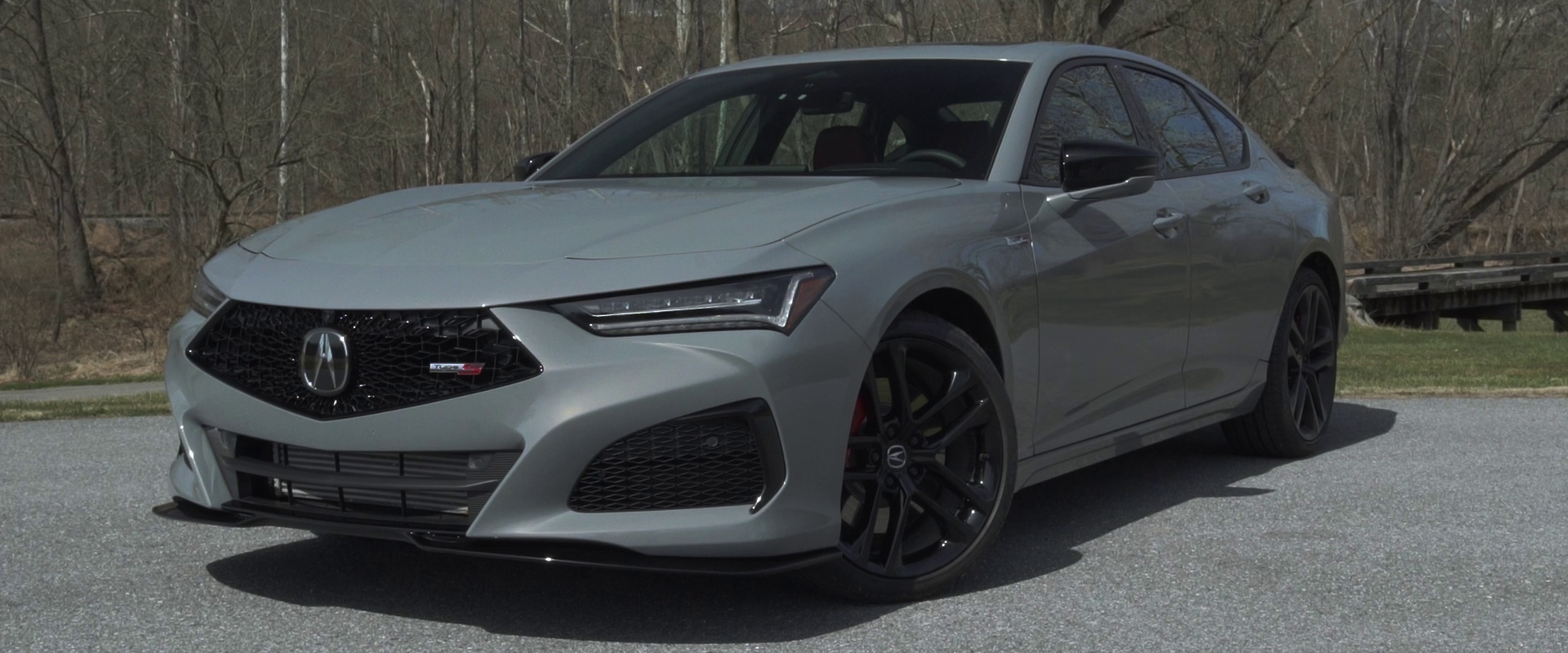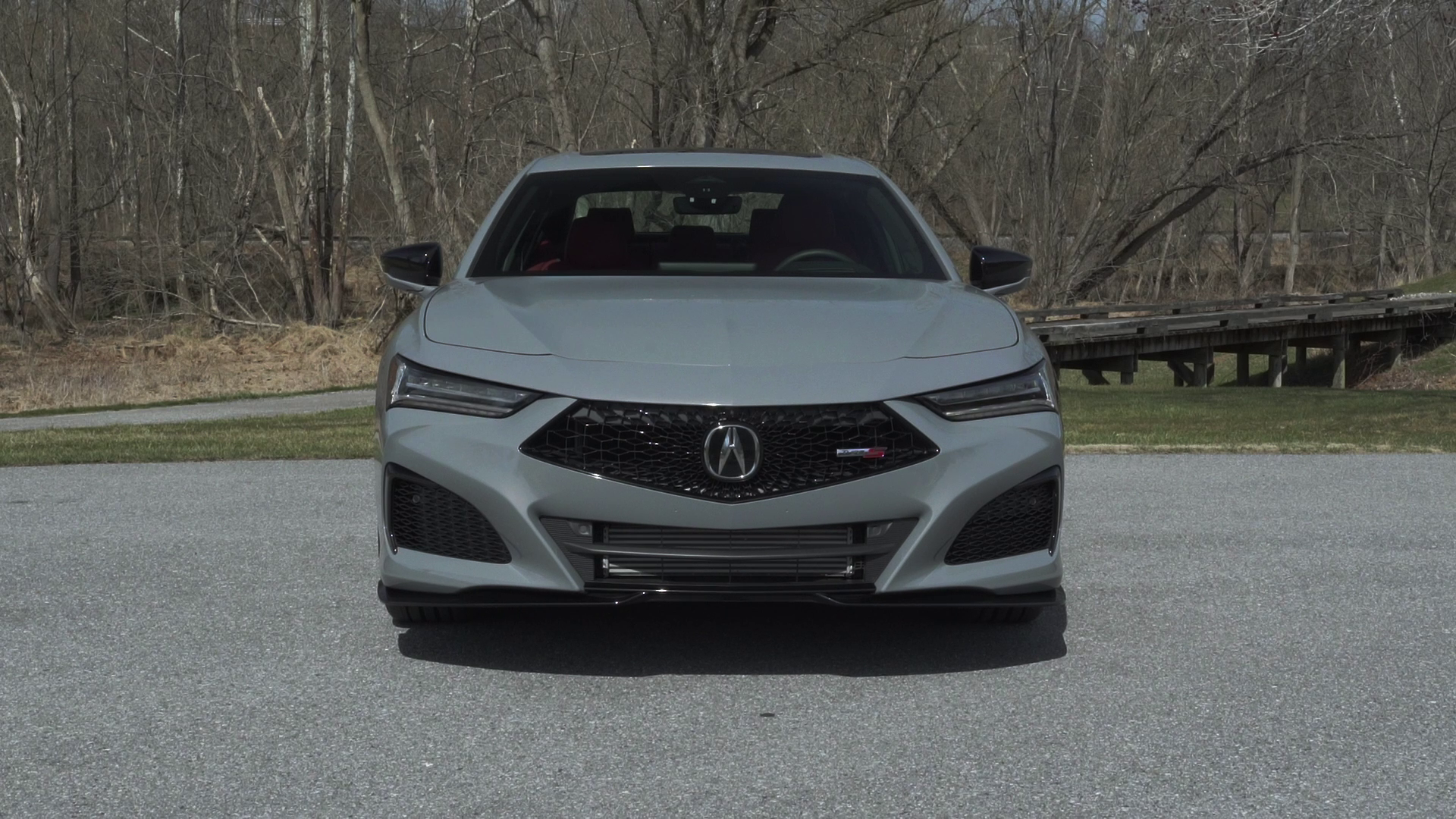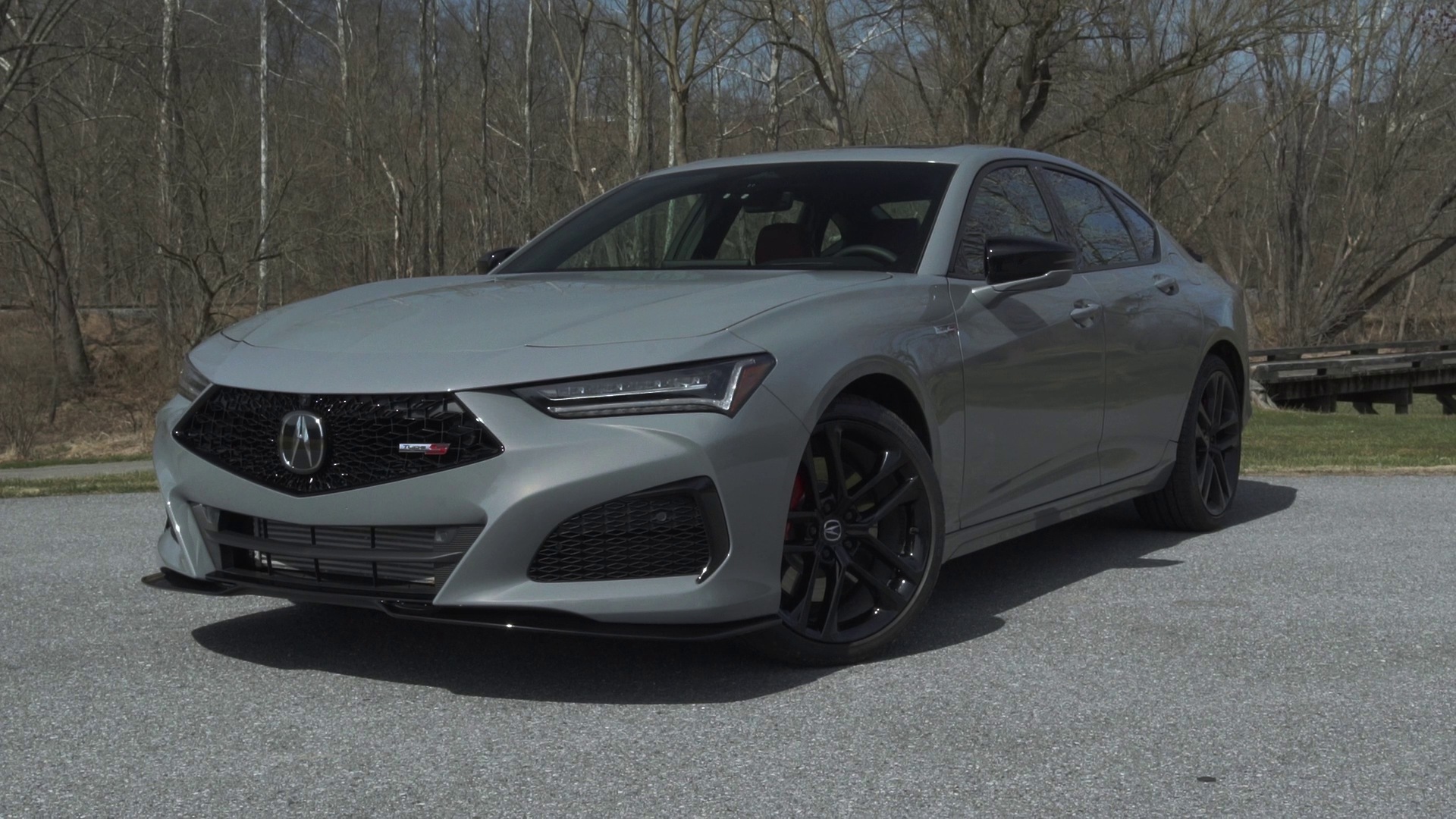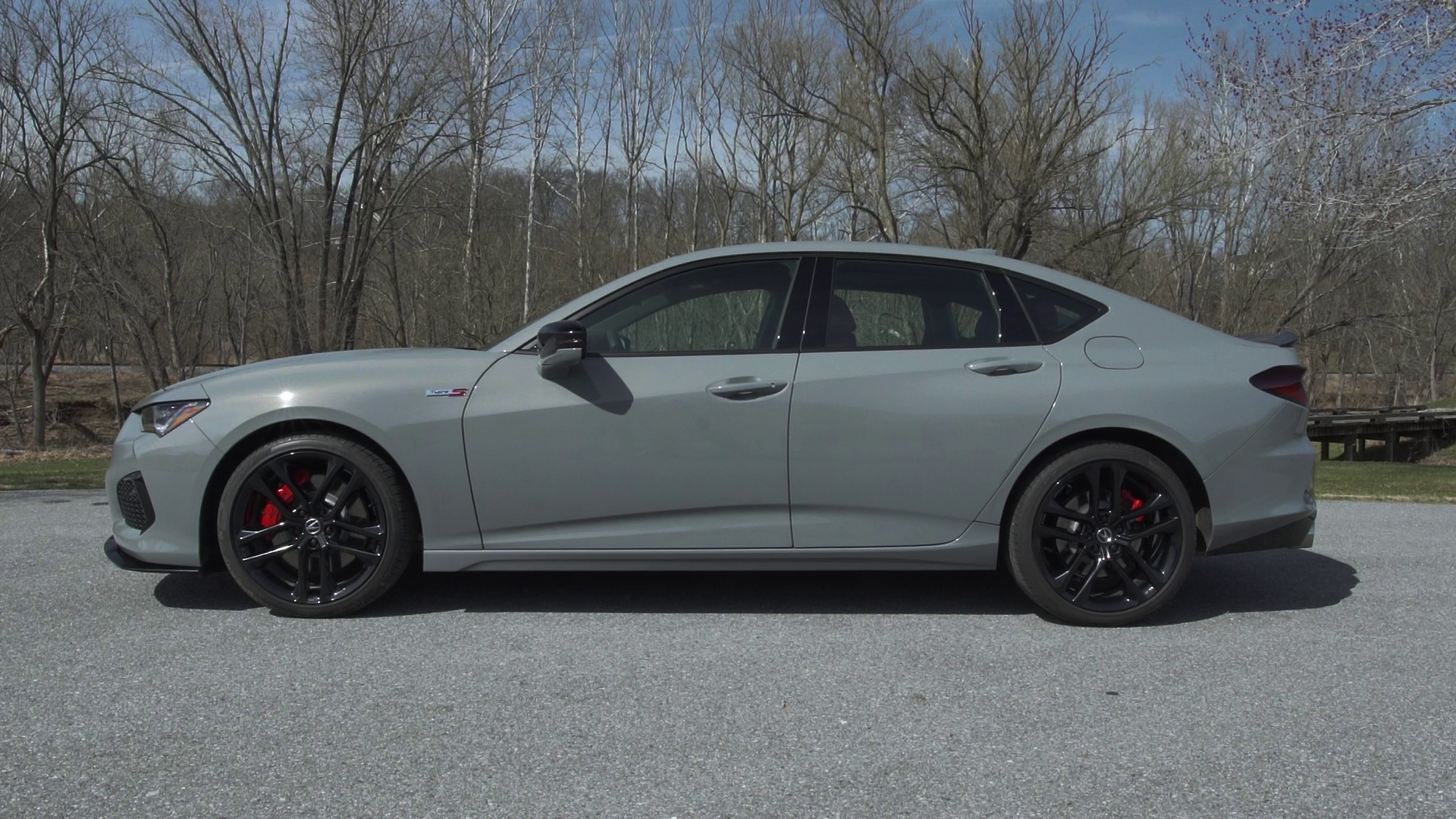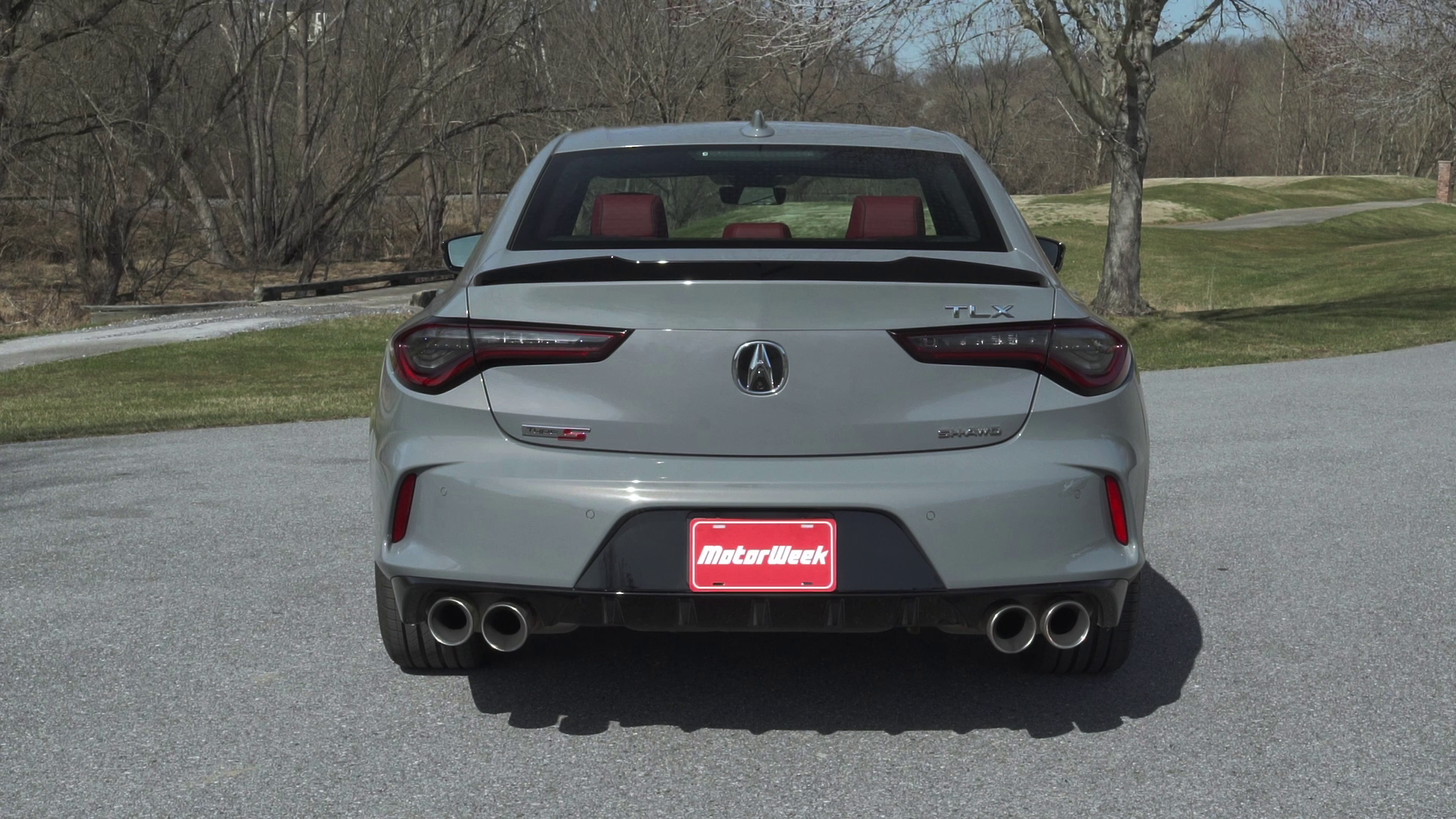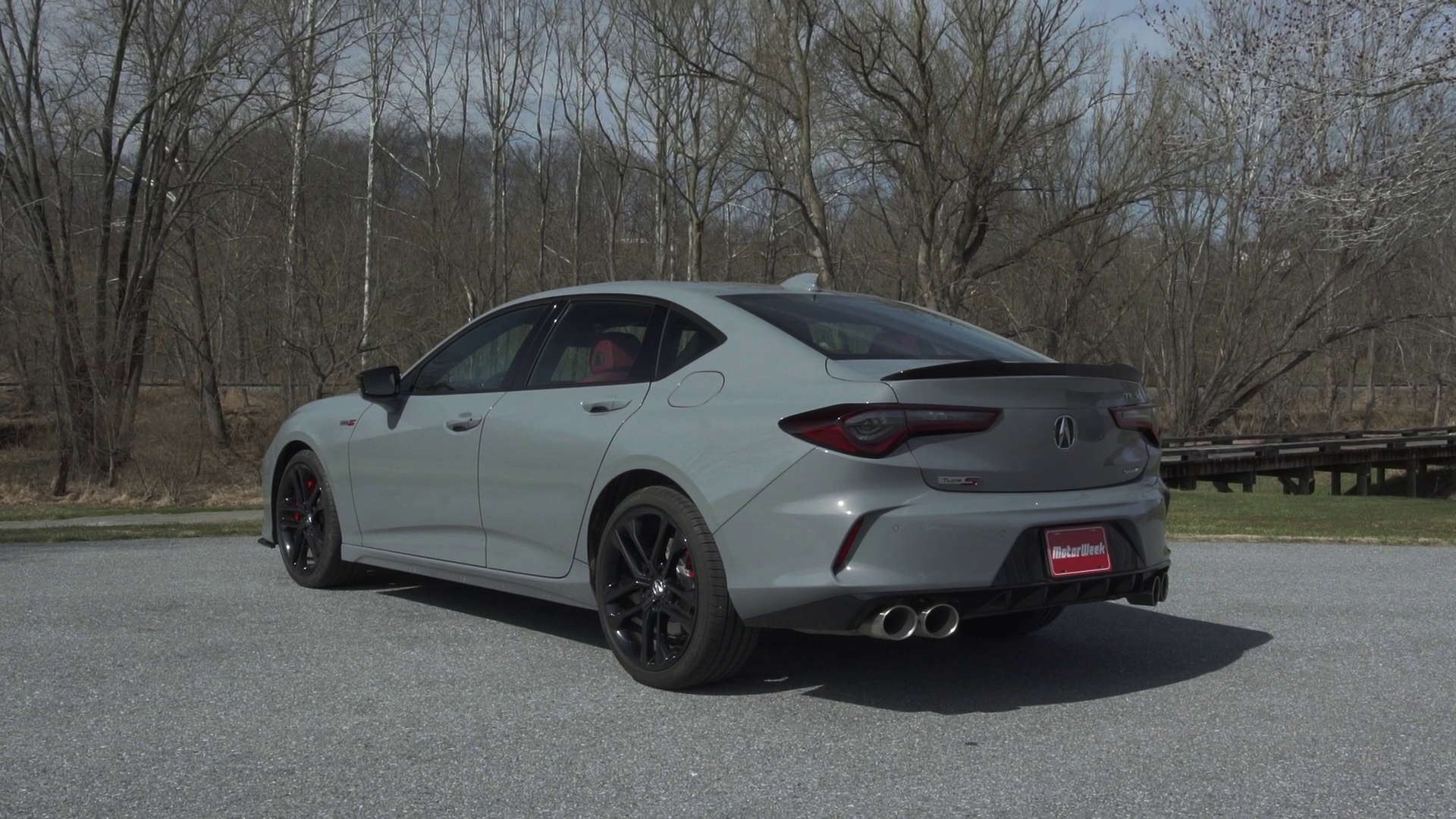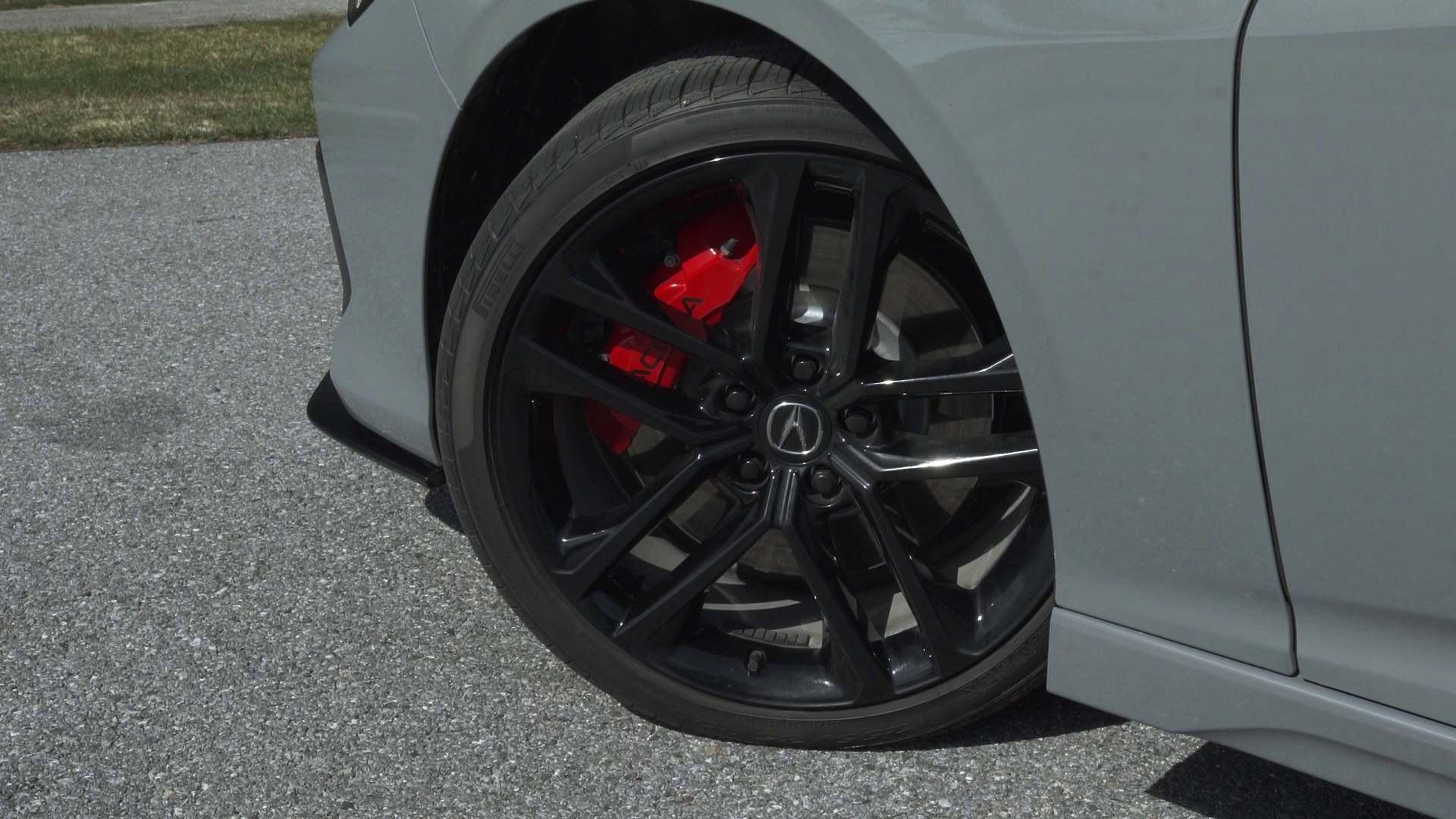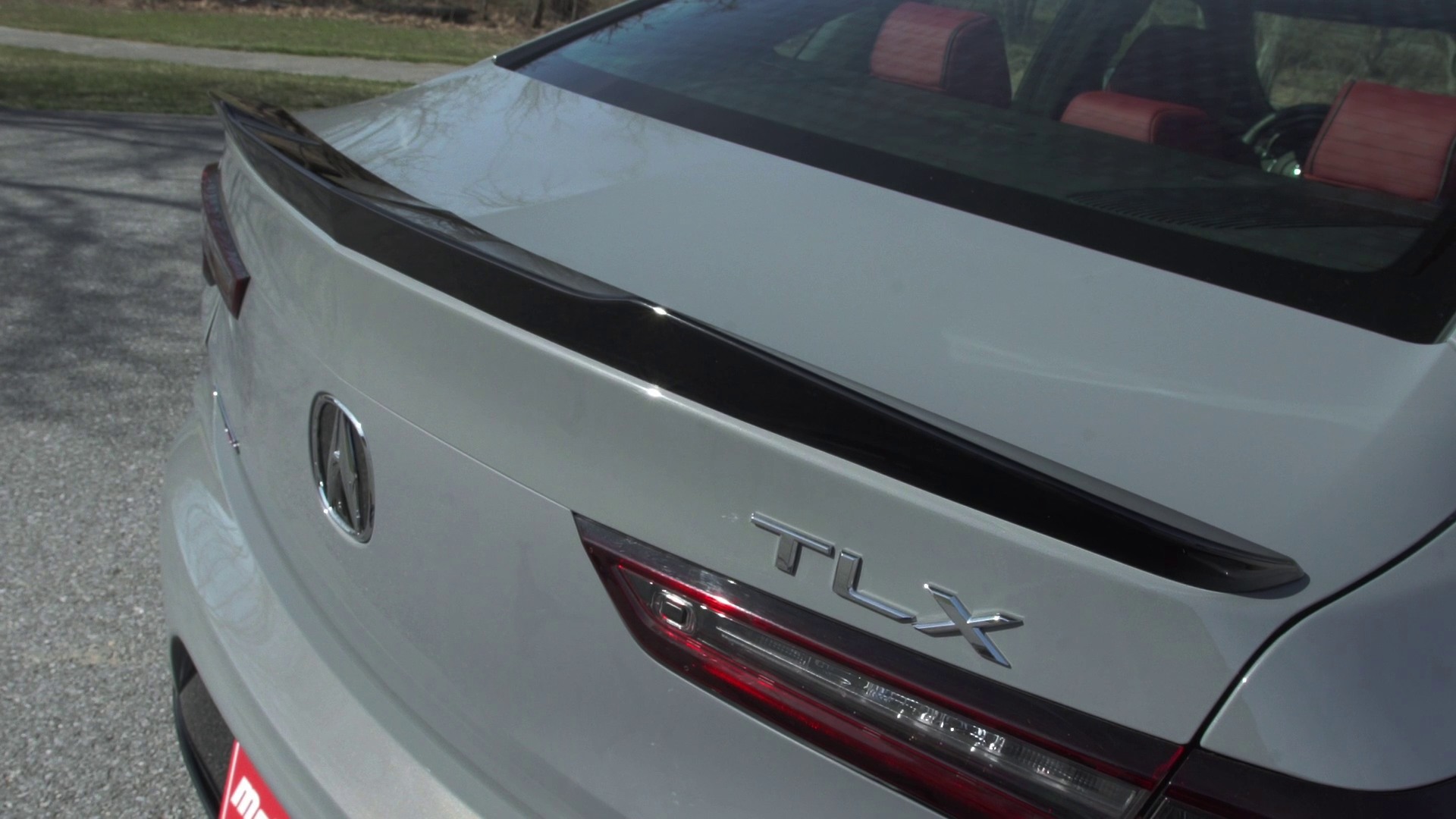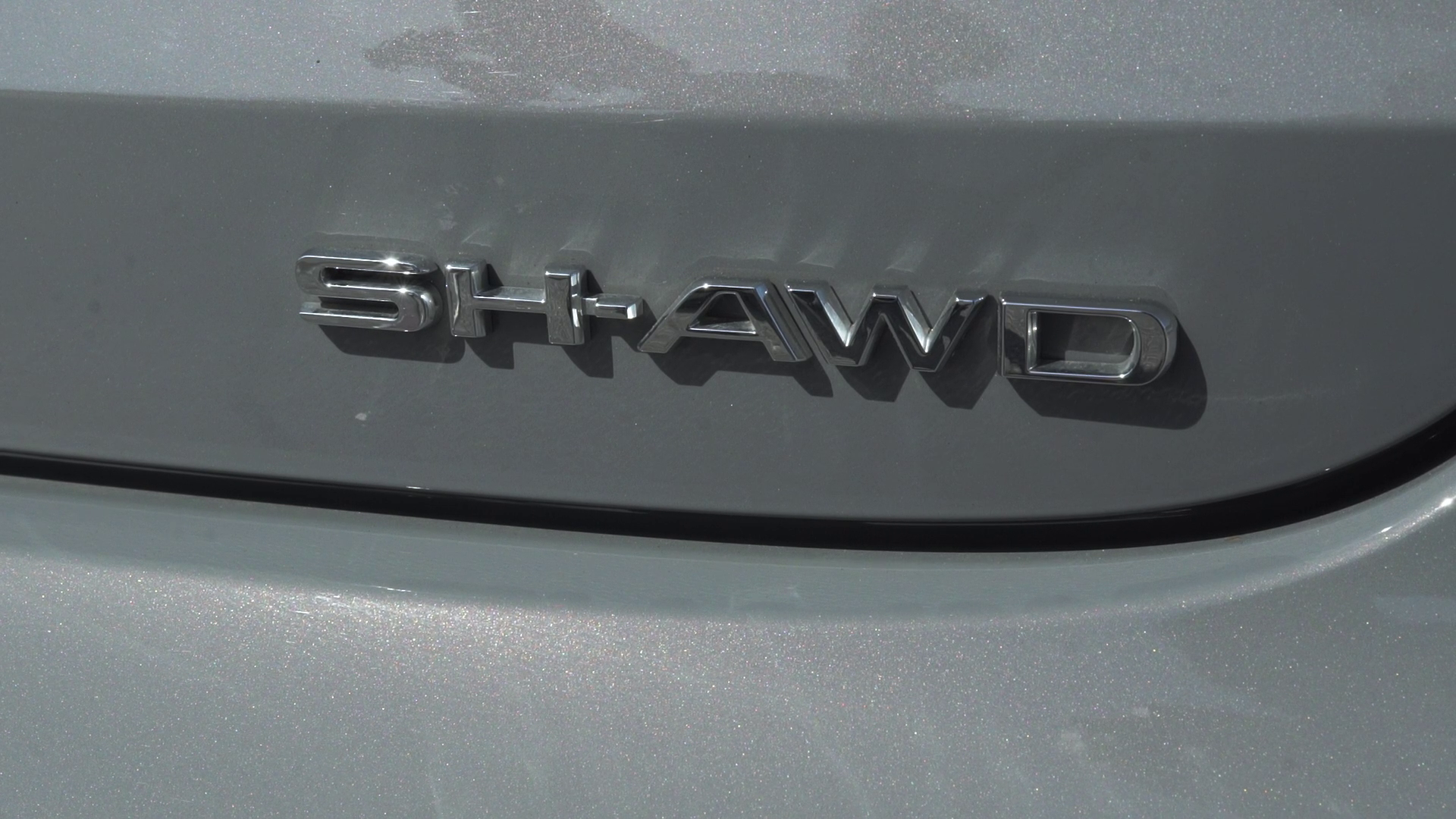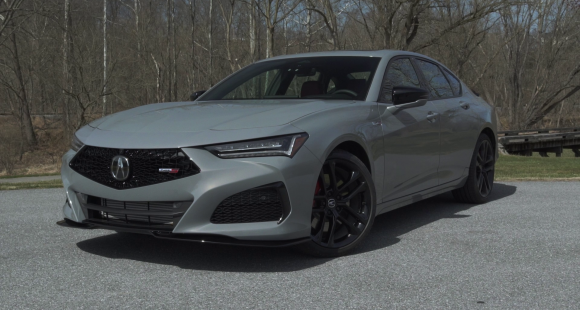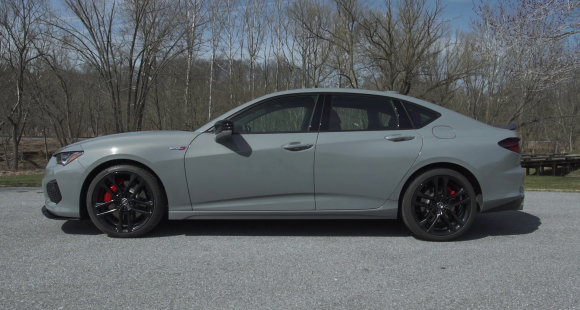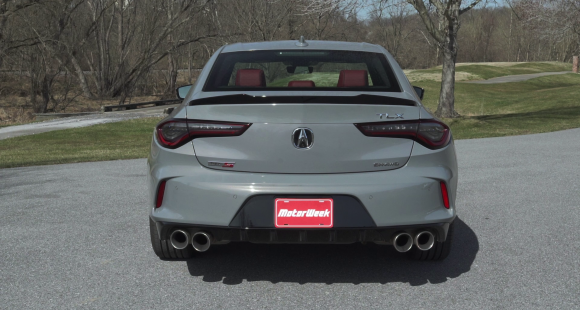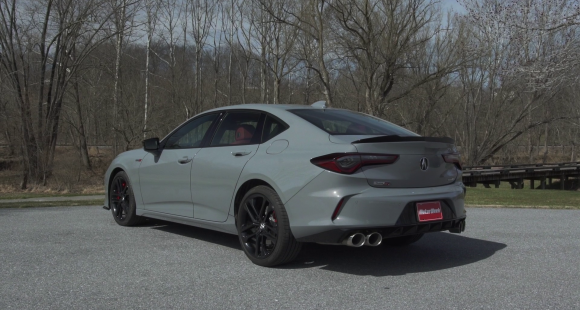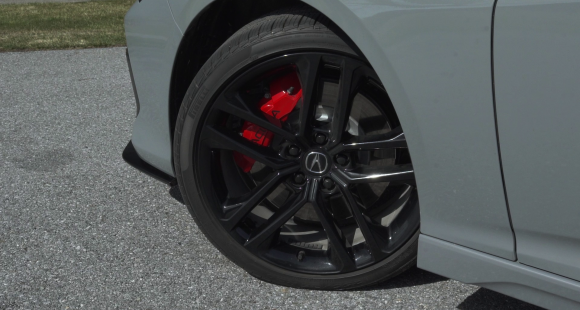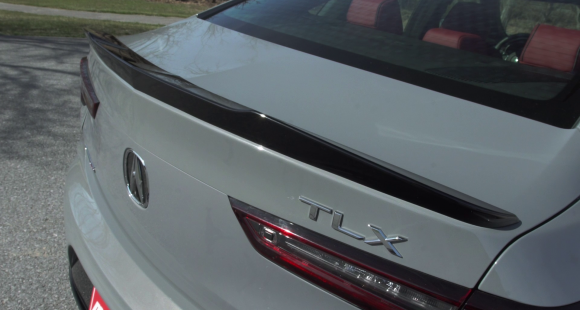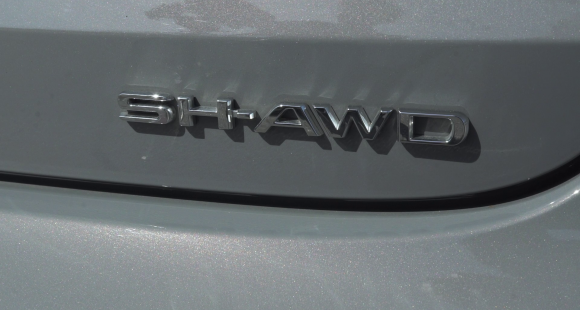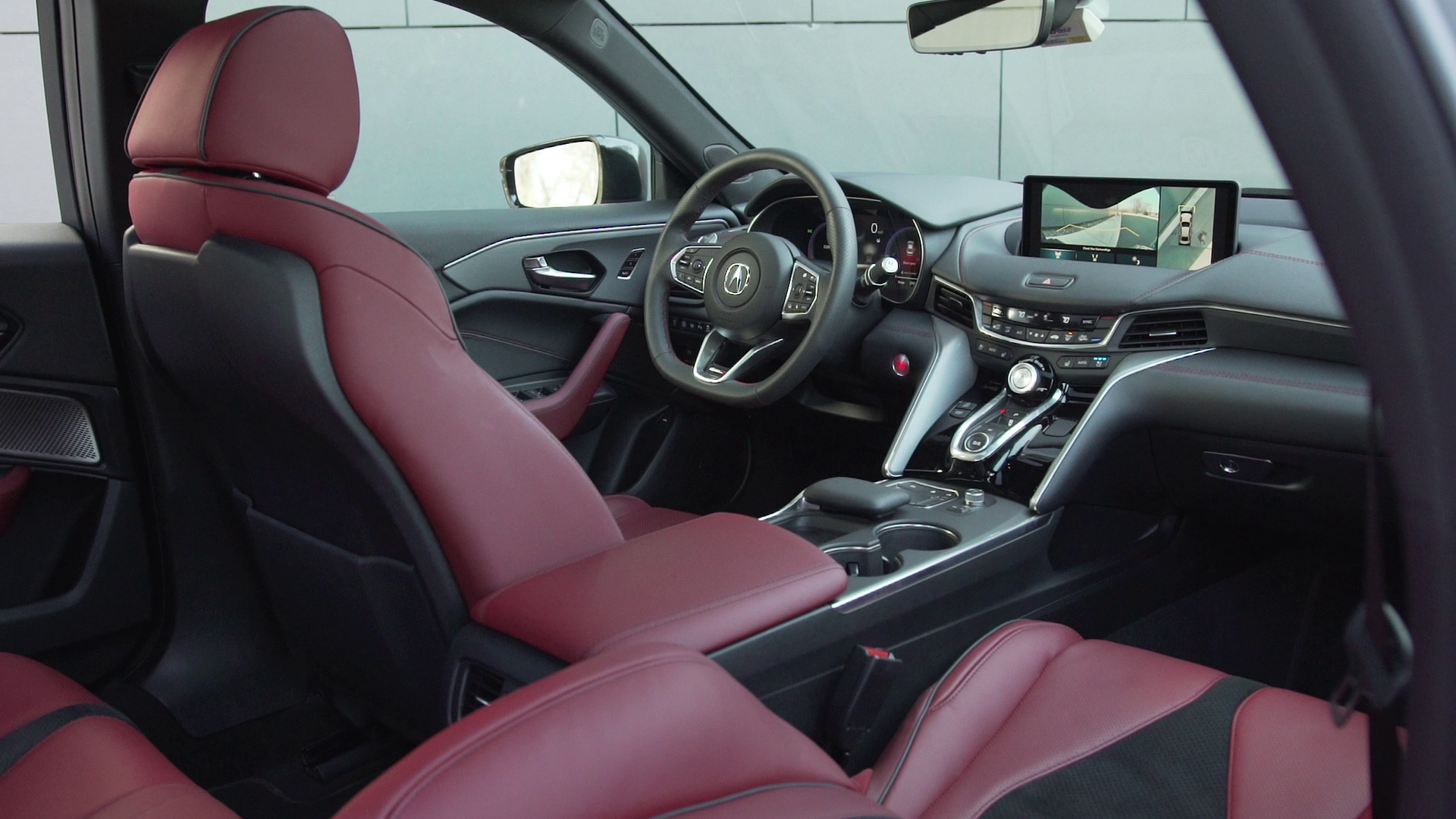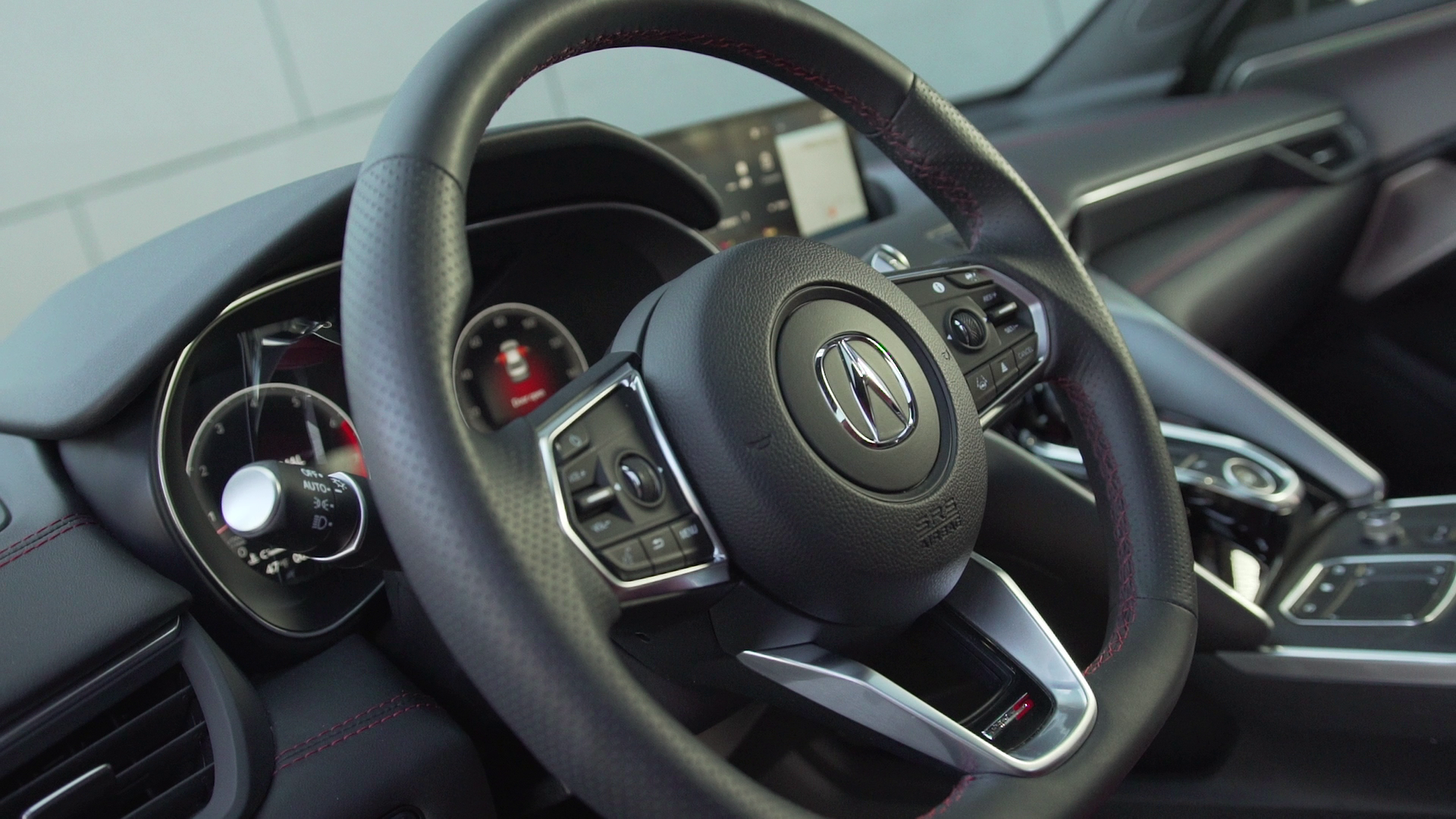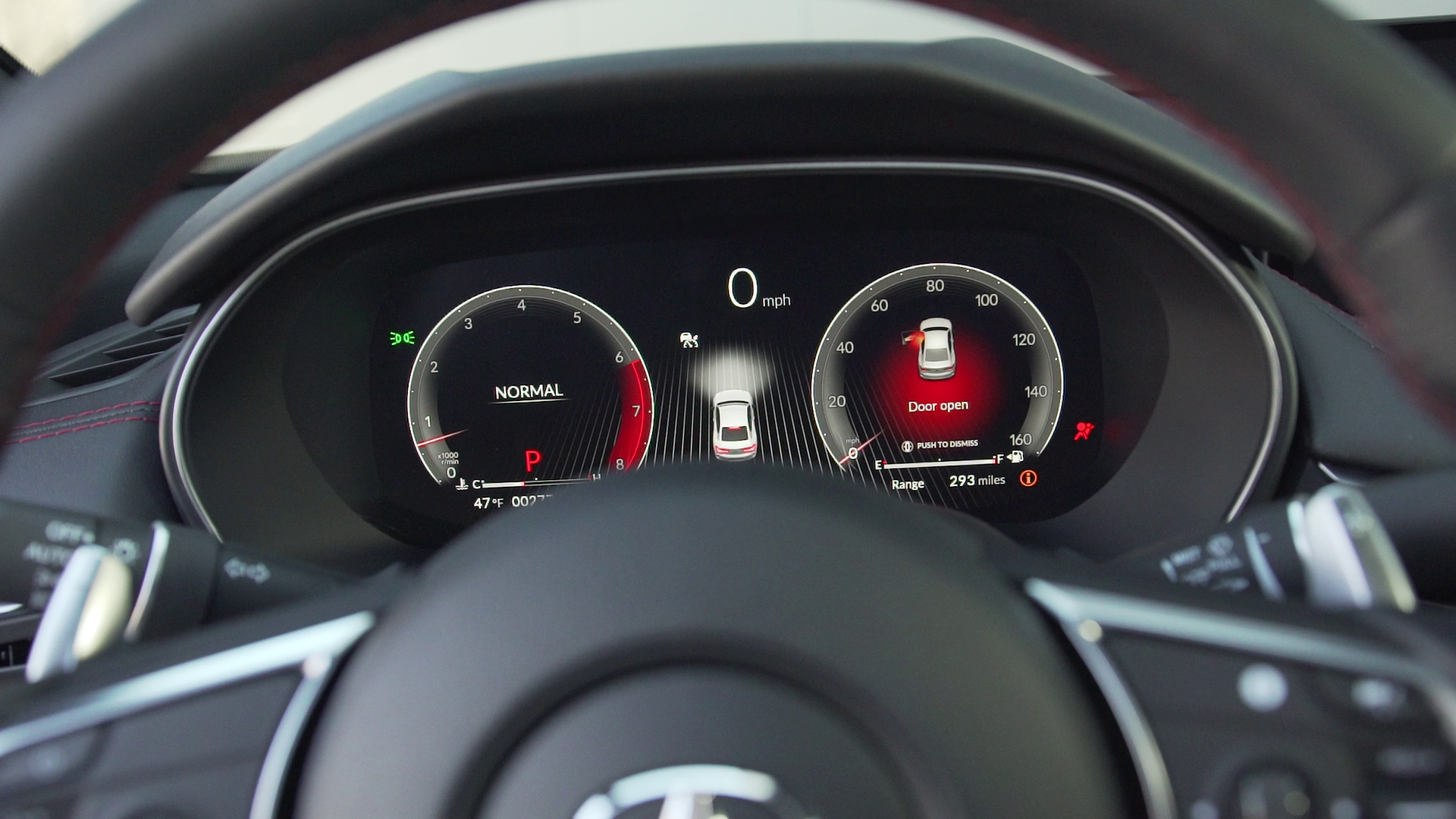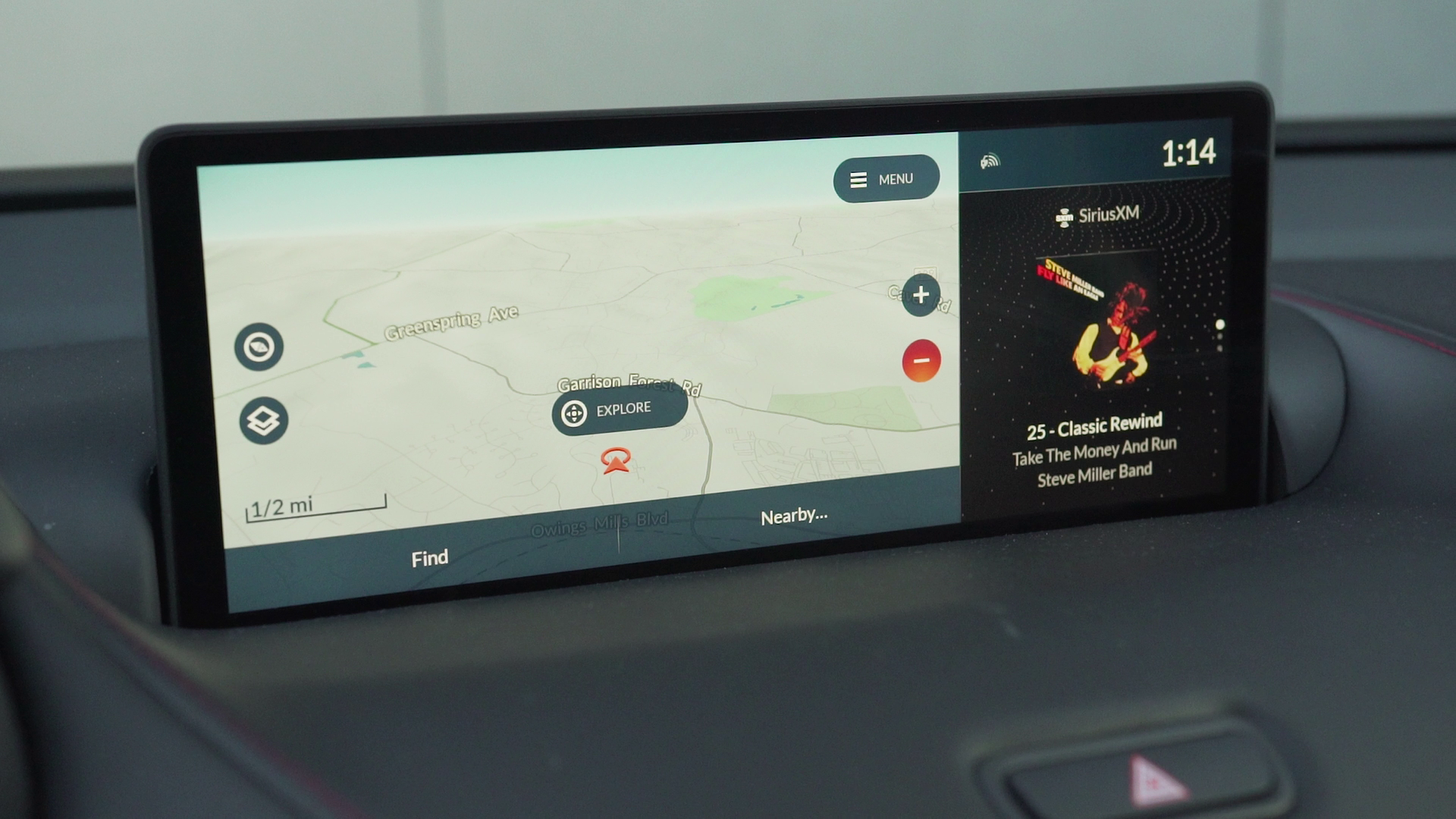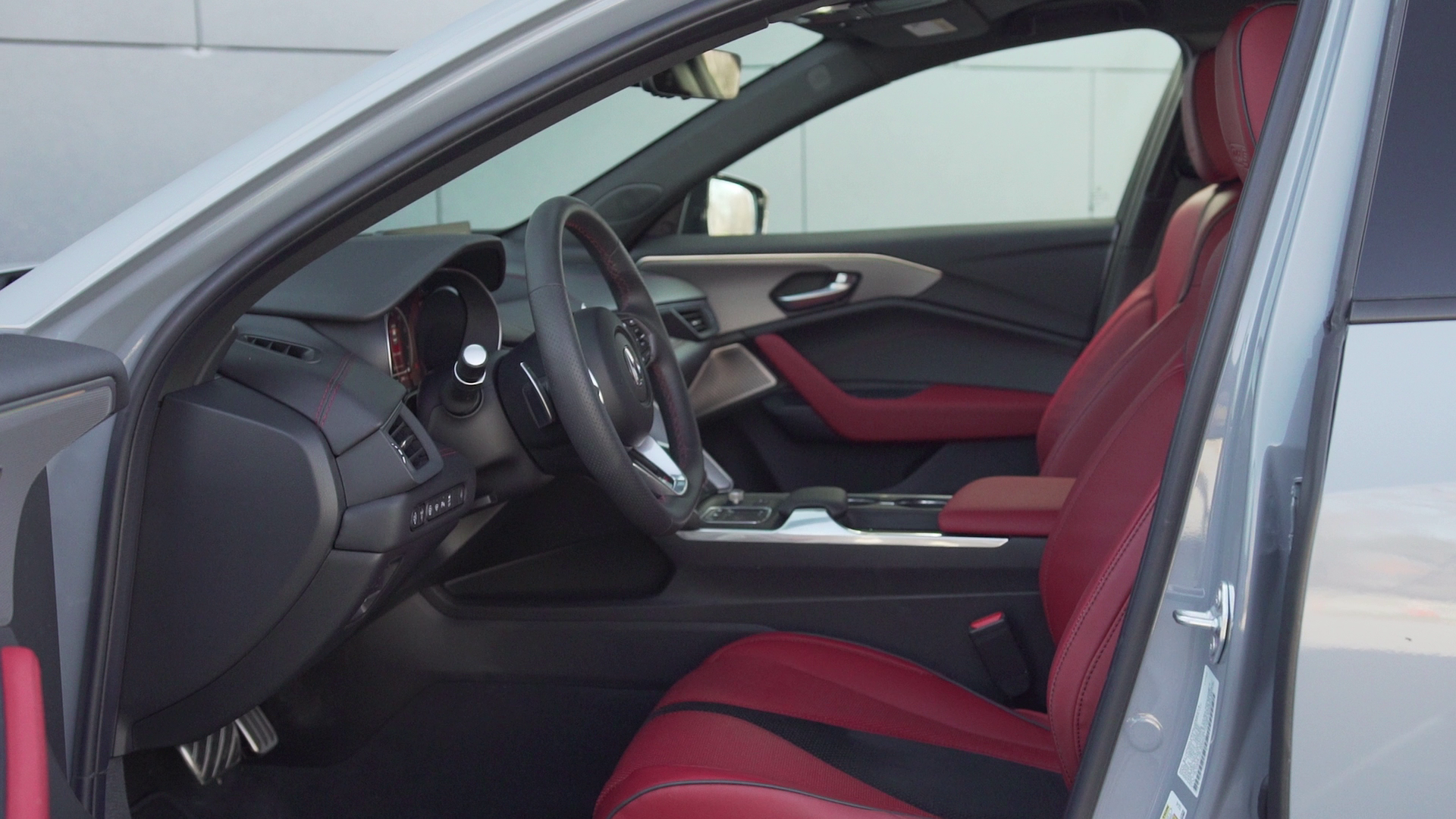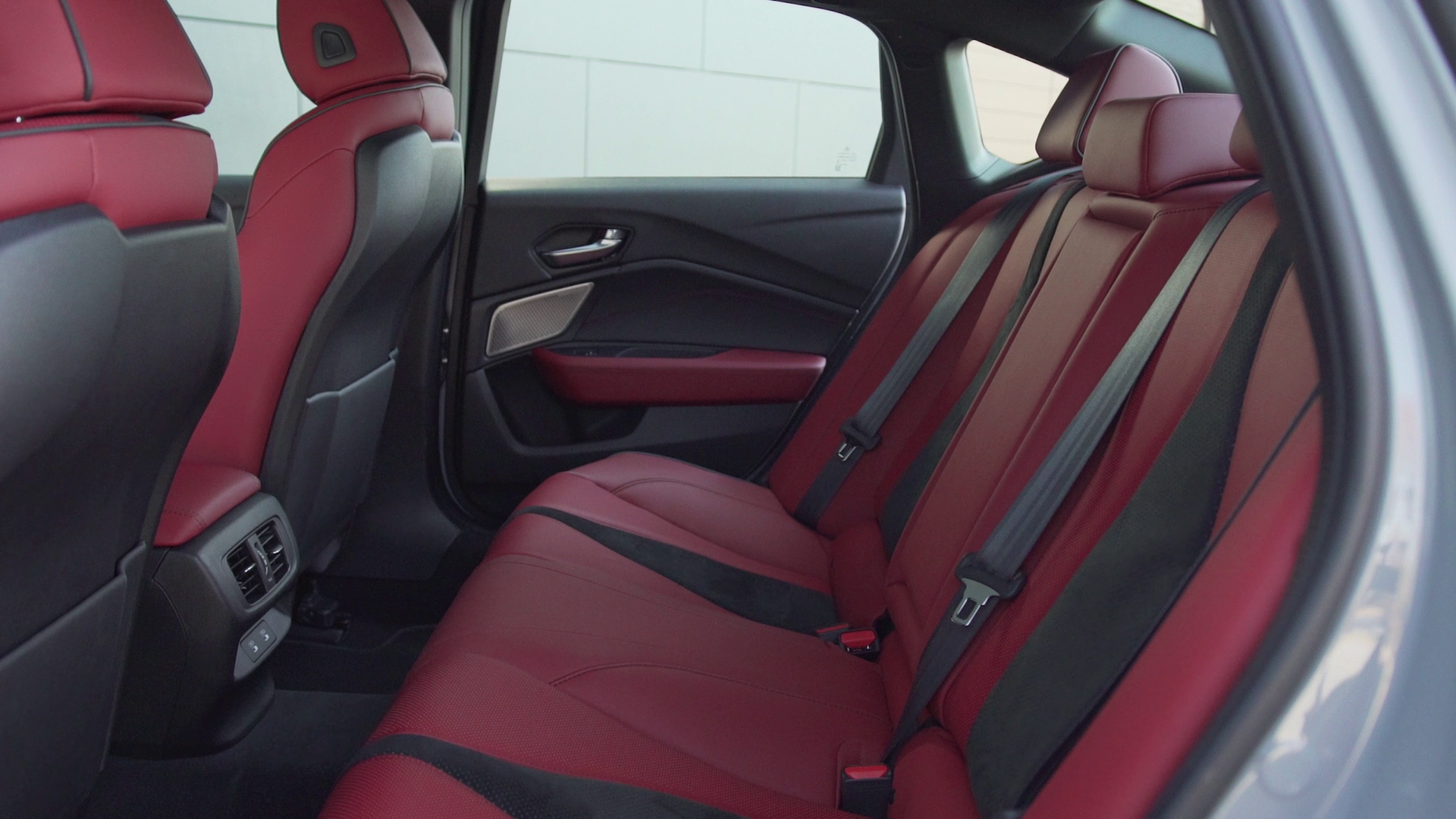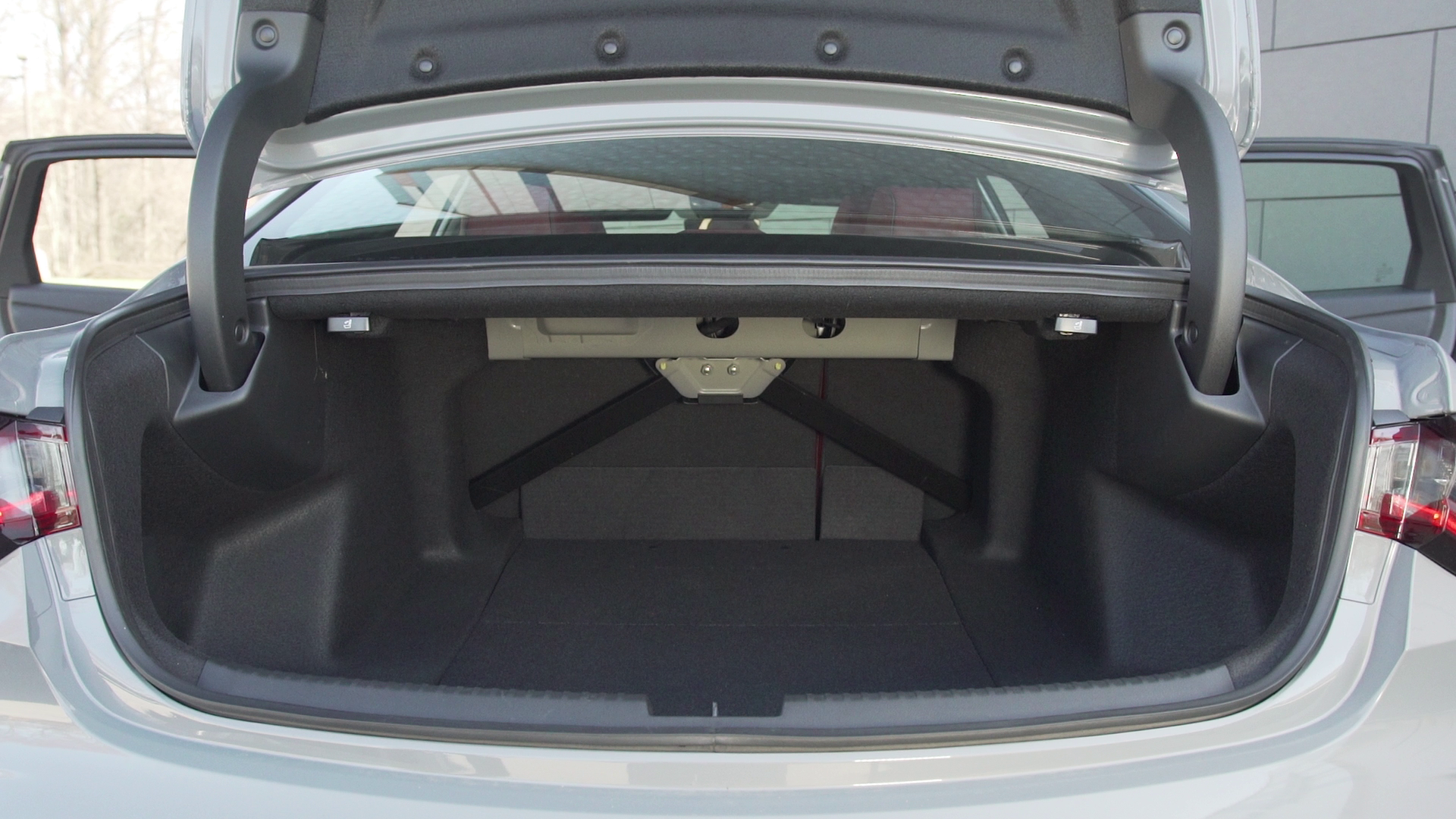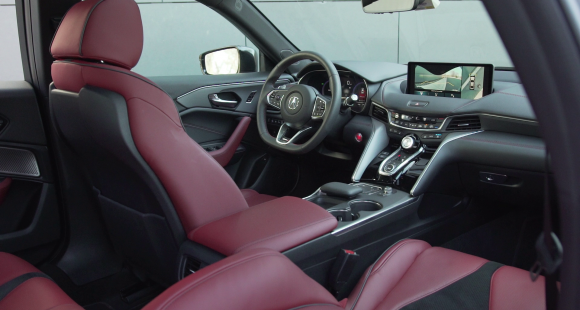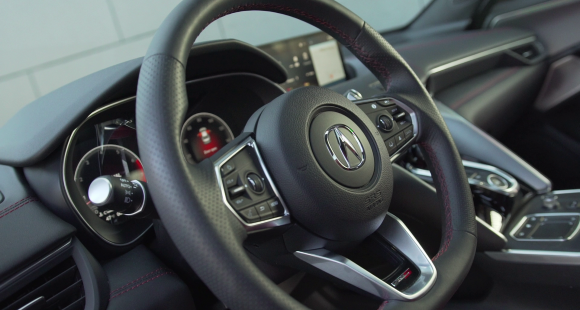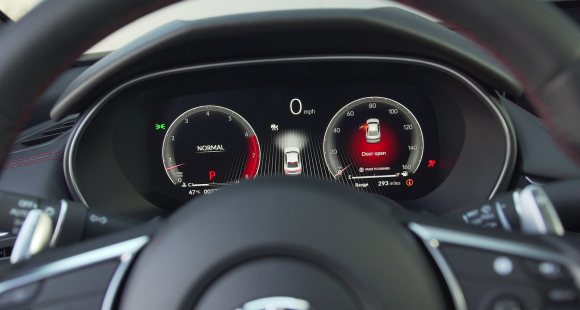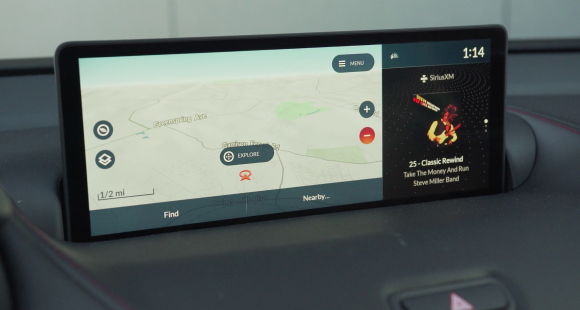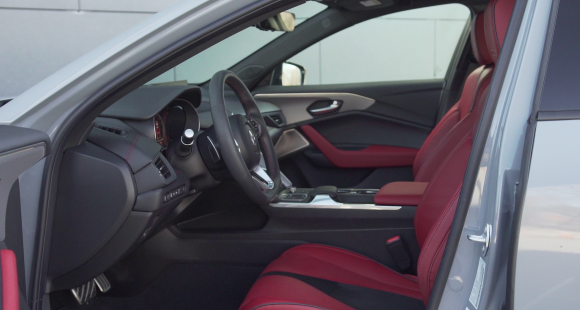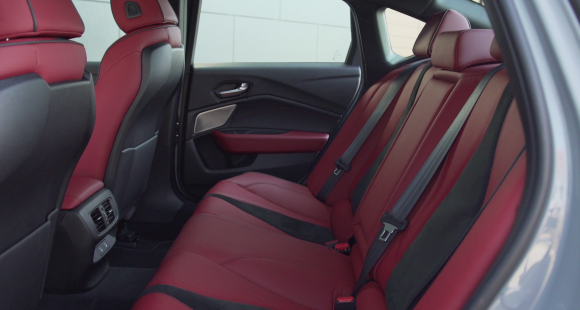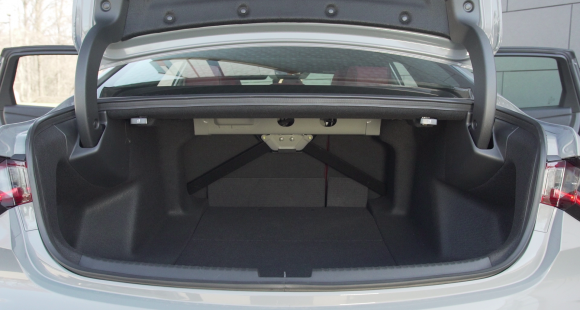2010 Porsche Panamera
It seems like the rumors of a four-door Porsche car have been dribbling out of Stuttgart for almost as long as MotorWeek‘s been on the air. Certainly, over the last three years, we’ve been fixated on every hint about the first sedan to wear the Porsche name in the firm’s 78-year history. Well, Porsche’s new flagship is no longer a rumor. This is the Panamera fastback sedan. Longer than a Cayenne SUV, it’s also the biggest Porsche ever. So, can any car this large perform like a true Porsche? Well, now’s our time to find out.
The 2010 Porsche Panamera takes its name from the legendary Carrera Panamericana race of the 1950s. While Porsche calls its first Gran Turismo a 4-door sedan, it actually has a rear hatch that makes five. But that’s only part of why Panamera’s styling is polarizing. While unmistakably Porsche, it’s on the conservative side, which should fit well-heeled sedan buyers. Frankly it also reminds us of a C6 Corvette-at the headlights, hood bulge, and even the side scoops.
With its long 115-inch wheelbase, and 195.6-inch overall length, the profile does start off coupe-like. But it becomes more tear drop towards the rear to allow for adult-sized backseat leg and headroom, something the rival Mercedes-Benz CLS lacks. The back view is wide, as if through a fish-eye lens. The hatch is well concealed, as is the retractable spoiler, with uniquely styled quad exhausts. Wheels are 18-inch standard, with optional 19’s.
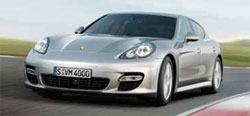 The Panamera is also the first front-engine Porsche car since the 928, driven by a pair of direct-injected V8s from the Cayenne. Panamera S and 4S use the normally-aspirated 4.8-liter with 400 horsepower and 369 pound-feet of torque. The Panamera Turbo adds twin turbochargers for 500 horses and a massive 516 pound-feet of torque.
The Panamera is also the first front-engine Porsche car since the 928, driven by a pair of direct-injected V8s from the Cayenne. Panamera S and 4S use the normally-aspirated 4.8-liter with 400 horsepower and 369 pound-feet of torque. The Panamera Turbo adds twin turbochargers for 500 horses and a massive 516 pound-feet of torque.
Gear change is Porsche’s latest 7-speed dual-clutch PDK automatic with manual paddle-shift mode. It feeds either the rear wheels of the Panamera S or all four wheels of the 4S and Turbo models. At our track, our Panamera 4S blazed from 0 to 60 in 4.9 seconds, and shot through the quarter mile in 13.5 seconds at 105 miles per hour. With Launch Control on, our car leapt out of the hole with a beastly roar. The PDK gearbox isn’t as quick as in the 911, but it’s smoother.
The Panamera’s chassis is defined by a front double-wishbone and a rear multi-link setup, all governed by Porsche’s Active Suspension Management. The adjustable dampers can be set to Normal, Sport, and suspension-lowering Sport Plus. In Sport Plus, we sliced through the cones in a razor-sharp manner. Steering response is perfect. The Panamera is a big, 4100-pound car. But that size seems to disappear the harder you push it. Our 4S also benefitted from optional Porsche Dynamic Chassis Control with its two active roll bars. Even at ridiculous speeds, cornering is flat.
Superb stopping power comes from four-wheel vented discs armed with six-piston calipers up front and four-piston in the rear. Stops averaged a very short 116 feet from 60 to zero. The Panamera just squats to a stop.
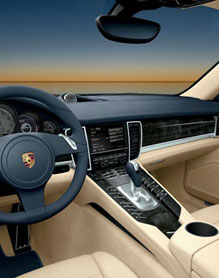 While the Panamera’s exterior may be controversial, the interior is a feast for the eyes. Beautifully trimmed in wood and even carbon fiber, there’s plenty of space for its four adult-wide seats. Your focus is drawn to two areas: the cascading 5-bezel gauge cluster, and a center console master control panel. There’s a lot of switches here, but they’re logically grouped. Navigation data is viewed on a large center stacked screen, and inside one of the gauges. Optional is a 17-speaker, 1000-watt Burmester stereo.
While the Panamera’s exterior may be controversial, the interior is a feast for the eyes. Beautifully trimmed in wood and even carbon fiber, there’s plenty of space for its four adult-wide seats. Your focus is drawn to two areas: the cascading 5-bezel gauge cluster, and a center console master control panel. There’s a lot of switches here, but they’re logically grouped. Navigation data is viewed on a large center stacked screen, and inside one of the gauges. Optional is a 17-speaker, 1000-watt Burmester stereo.
Rear vision is mostly blind spots, so both the available camera and front-rear parking sensors are recommended. The rear seats require little contortion to get to, and as we mentioned before, adults will find a generous space with headroom boosted further by a scalloped headliner. Amenities include adjustable vents, armrest with cup holders, and an available twin screen DVD system. Impressively practical, drop the 40/20/40 rear seats to expand luggage space from 15.7 cubic feet to a crossover-like 44.6.
Government Fuel Economy ratings for the 4S are 16 City/24 Highway on premium gas. We managed only 16.7 in mixed driving. The Panamera uses a mild hybrid-like start/stop system to shut down the engine at traffic lights.
Panamera pricing starts at $90,750 for the S, $94,750 for the 4S, and $133,550 for the Turbo. There’s no gas guzzler tax. That’s a notch above an S-Class, but comparable to an Audi S8. Naysayers can have a seat, because Porsche has done it. The 2010 Panamera is a primo luxury sedan and sports-car-for-four all rolled into one. Styling aside, this unique saloon delivers everything it promises, plus a lot more.
Specifications
- Engine: 4.8-Liter
- Horsepower: 400
- Torque: 369 Lb Feet
- 0-60 MPH: 4.9 Seconds
- 1/4 Mile: 13.5 Seconds @ 105 MPH
- 60-0 MPH: 116 Feet
- EPA: 16 MPG City/ 24 MPG Highway
- Mixed Loop: 16.7 MPG
2024 Acura TLX Type S
A Grown-Up Sport Sedan Looking To Do Boy Racer Things
While the recent and highly successful relaunch of the Acura Integra has been hogging most of the brand’s headlines, the Integra is not the only sporty car that Acura builds. In fact, it’s the all-wheel-drive TLX Type S that remains Acura’s quickest and best handling sport sedan. Add in numerous updates for 2024 and it clearly demands our attention once again.
We are indeed looking closer at this updated 2024 Acura TLX Type S sport sedan and noticing quite a few changes. For starters, it’s one very aggressive looking four-door. Most of that due to the Type S upgrades which include a front splitter, rear spoiler and diffuser, big quad exhaust tips, Brembo brakes, and 20-inch wheels, though all TLXs get updated front fascias and grillwork for ’24.
Inside the tech-heavy interior, things look and feel great with upscale materials and fine stitching. A new 12-inch Precision Cockpit Digital Instrument cluster, ELS Premium Audio, wireless phone charging, and ambient lighting are now standard on all TLXs.
The upgraded infotainment screen grows from 10- to 12-inches and features faster processing, though after spending a year with an Integra and its touchscreen, having to use the touchpad interface here in the TLX is a clear step back in terms of functionality. Updates specific to the Type S include a surround view camera and a 10.5-inch Head Up Display. And there’s no taking a back seat to luxury in the back seat of the TLX; plenty of comfort and space for adults, plus some new charging ports.
A 272-horsepower 2.0-liter I4 turbo comes in the standard TLX, but thankfully the Type S’s fire-breathing 3.0-liter turbo V6 is still under the hood here, putting out 355 horsepower and 354 lb-ft of torque. No changes for either engine, but we’ll take that as a great thing these days. And there may not be any additional power, but there is sharper throttle response in Sport+ mode than before, so it will give you the impression that you’re working with a little more. Transmission remains a 10-speed automatic with paddle shifters on the steering wheel. Super-Handling All-Wheel-Drive is standard with the Type S and A-Spec, only the base TLX remains front-wheel-drive only.
Spring maintenance was still in progress at our test track and things weren’t quite fully prepped for the season just yet, so the Type S’s all-wheel-drive traction was much appreciated; as it allowed us to pounce off the line and rip to 60 in just 5.0 seconds flat, a tenth quicker than the last Type S we tested in ’21. It ripped through first and second gears quickly, before settling down a bit as it worked its way to the end of the quarter-mile in 13.5 seconds at 104 mph.
And there may not be any additional power, but there is sharper throttle response in Sport+ mode than before, so it will give you the impression that you’re working with a little more.
While far from a noisy car, Acura has installed some thicker carpet to quell what little road noise was apparently seeping in. Thankfully, they didn’t do anything to dampen engine or exhaust noises, as they sound fantastic.
This TLX scooted through our cone course quite efficiently, behaving as if on the proverbial set of rails. Type S tuning includes additional bracing for the chassis, plus firmer settings for the adaptive dampers that are part of the double-wishbone front and multi-link rear suspension.
Acura’s SH-AWD has been torque-vectoring power between all four wheels since long before that was commonplace; and its technical heavy-handedness is evident, as while it was slicing through the exercise with precision, it wasn’t always obvious how it was all happening. The Brembo brakes felt great, and were fade-free, but at 125 feet from 60 mph, stops were closer to family sedan territory than the typical sport sedan.
But there’s no skimping on active safety here, with full Acura Watch features including Lane Keeping Assist, Collision Mitigation Braking, Road Departure Mitigation, and Advanced Pedestrian Detection standard on all TLXs.
Government Fuel Economy Ratings are 19-City, 25-Highway, and 21-Combined; we averaged a good 23.6 mpg of Premium. That’s a slightly below average Energy Impact Score; using 14.2-barrels of oil yearly, while emitting 6.9-tons of CO2.
A simplified pricing structure now leaves you with three TLX choices, Technology, A-Spec, and Type S; things start at $46,195; this Type S will set you back $58,195.
Is it worth it? Well, it all depends on what your priorities are. If you’re looking for a super comfy luxury commuter, then probably not. But, if you’re looking for a superior driver’s car, with the most performance you can get in an Acura sedan, and plan on putting it to good use, then the 2024 Acura TLX Type S is absolutely worth it.
Specifications
- Engine: 3.0-liter turbo V6
- Horsepower: 355
- 0-60 mph: 5.0 seconds
- 60-0 Braking: 125 feet (avg)
- MW Fuel Economy: 23.6 mpg (Premium)
- Transmission: 10-speed automatic
- Torque: 354 lb-ft.
- 1/4 Mile: 13.5 seconds at 104 mph
- EPA: 19 City | 25 Highway | 21 Combined







